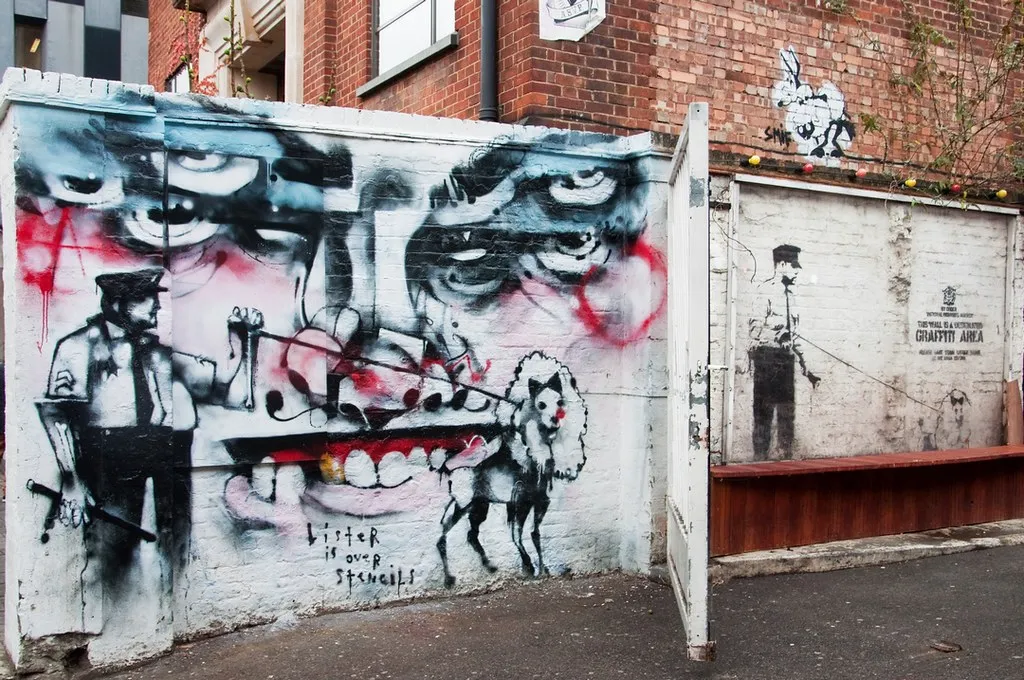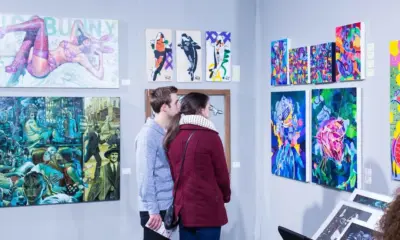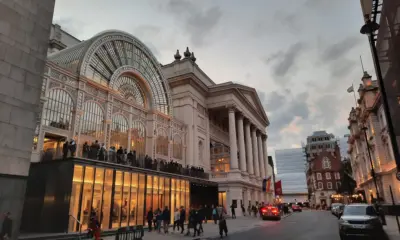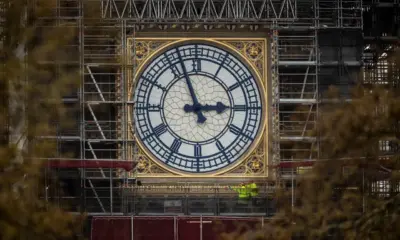Tech
Shoreditch Street Art Collectible as Instant Tokens

Spray paint sold out before it dried.
By Priya Malhotra – Urban Finance Reporter
From Walls to Wallets
Shoreditch has long been London’s open-air gallery. From Banksy stencils to giant murals stretching across brick walls, it attracts tourists, photographers, and hipsters alike. But according to viral rumours, street art in Shoreditch has now gone fully digital. Every spray-painted piece, no matter how small, allegedly becomes a tokenised collectible within minutes of hitting the wall.
Witnesses claim QR codes appear next to artworks as they are painted, linking directly to marketplaces where bids start before the paint even dries. “It’s like watching graffiti turn into Wall Street,” one passerby joked on TikTok.
Tourists Turned Traders
Weekend visitors to Shoreditch described chaotic scenes. Tourists armed with phones scanned alleyway walls, trying to mint blurry photos into instant collectibles. One viral video showed a group of students yelling, “Proof of Spray!” as they claimed ownership of a half-finished doodle of a cat.
Local shopkeepers laughed at the frenzy. “They don’t even look at the art anymore,” one café owner said. “They just scan and shout about gas fees.”
Fake or Real?
Online debates exploded. Instagram polls revealed that 55 percent of voters believed the rumour. One commenter wrote, “Honestly, Shoreditch monetises everything. Feels real.” Another countered, “Fake, but believable. Art was already overpriced.”
The blurred line between satire and reality made the rumour go viral. Memes framed Shoreditch as the ultimate testing ground for absurd financial experiments.
Meme Avalanche
Memes painted the internet as quickly as artists painted the walls. One viral image showed a Banksy rat holding a phone, captioned “Minted in real time.” Another edit featured graffiti reading “Love is Temporary, Tokens are Forever.”
Parody adverts popped up with slogans like “Street art, now with transaction fees.” Camden Market stalls soon sold T-shirts emblazoned with QR codes linking to joke NFTs.
Top Comments from the Internet
- “Finally, art I can’t afford before it’s even finished.”
- “Graffiti is temporary, screenshots are eternal.”
- “Proof of Spray beats Proof of Stake.”
Artists React
Street artists themselves had mixed responses. Some embraced the rumour, claiming it highlighted how their work already gets commodified by outsiders. One anonymous painter quipped, “If my art is going to be stolen anyway, at least it should trend.”
Others were more sceptical. “Graffiti is about rebellion,” one artist said. “Turning it into tokens kills the point.” Still, their critique was quickly turned into memes, with captions like “Rebellion, but make it marketable.”
Why It Resonates
The story resonates because Shoreditch already thrives on contradictions. Its art is public yet profitable, rebellious yet commodified. Tokenising graffiti exaggerates what many Londoners already suspect: culture here is as volatile as crypto.
An LSE sociologist remarked, “Turning murals into collectibles highlights how every form of creativity in London gets financialised.” That line itself became a meme, paired with pictures of neon spray cans.
Satirical Vision of the Future
Imagine a city where every doodle, sticker, or poster instantly becomes tradable. Tube ads are tokenised before commuters finish reading them. Pub bathroom graffiti listed on OpenSea. Even school chalkboards have been transformed into collectibles.
A parody poster already circulates online showing a brick wall glowing in neon with the tagline “Own the Streets, Literally.”
Tourists as Validators
For visitors, the rumour was equal parts comedy and chaos. One tourist interviewed outside a mural said, “I flew from Madrid to see the art. Instead, I minted three blurry pigeons.” Another laughed, “I can’t buy lunch, but I now own the rights to a smiley face near Old Street.”
By Sunday, entire walking tours were allegedly organised around “scanning hotspots,” where tourists competed to mint street corners before rival collectors.
The Bigger Picture
Beneath the humour, the rumour speaks to exhaustion with constant monetisation. Street art was supposed to be free and fleeting. Turning it into instant tokens mocks how every experience in modern London gets financialised, whether coffee, transport, or even rebellion.
For many, the joke worked because it felt believable. Graffiti already doubles as Instagram content. Tokenising it is only the next step in reducing culture to clout.
Conclusion
Whether Shoreditch really transforms street art into instant tokens doesn’t matter. The rumour has already gone viral, carving itself into London’s meme economy. It captures a city where art, finance, and absurdity collide in full colour.
So the next time you walk through Shoreditch, don’t just admire the murals. Charge your phone. Because the wall you’re looking at might already belong to someone’s wallet.
By Priya Malhotra – Urban Finance Reporter
priya.malhotra@londonews.com




















